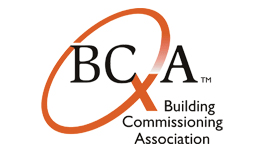The Building Commissioning Association (BCA) officially released its New Construction Building Commissioning Best Practices. This publicly available document is applicable to most building types and distills the long list of guidelines, and longer list of tasks, into easy-to-navigate activities that represent the ideal commissioning process.
This document represents a collaborative effort on the part of several leading experts in the field of commissioning. Bruce Pitts of Wood Harbinger, Inc and Karl Stum of Summit Building Engineering spearheaded this two-year effort.
According to its authors, it aims to promote commissioning in the marketplace by defining the qualities and characteristics of best commissioning practices and to raise professional standards by establishing a benchmark against which the market can gauge quality and professionalism, and which the BCA can use to objectively evaluate other commissioning initiatives, including their own.
“I am proud of this Best Practices document,” stated BCA President Mark F. Miller, PE, CCP. “A unique and valuable aspect of this document is to identify several of the most common issues, pitfalls and challenges that BCA members see in the industry related to the practice of commissioning new construction and major renovation projects. Our hopes are that by highlighting these challenges and identifying proven strategies for overcoming them that this will heighten awareness and understanding and lead the industry to overcome these problems while promoting quality and standardization in the industry.”
New Construction Building Commissioning Best Practices draws upon existing resources such as the BCA’s own Building Commissioning Handbook, NEBB Procedural Standards for “Whole Building Systems Commissioning of New Construction”, National Institute of Building Science (NIBS) “Whole Building Design Guide”, ASHRAE Guideline 0-2005, ASHRAE Guideline 1.1-2007 and the USGBC LEED rating system.
Best Practices in Commissioning Existing Building is available in its entirety on the BCA website at www.bcxa.org. BD+C
Related Stories
| Nov 2, 2010
Energy Analysis No Longer a Luxury
Back in the halcyon days of 2006, energy analysis of building design and performance was a luxury. Sure, many forward-thinking AEC firms ran their designs through services such as Autodesk’s Green Building Studio and IES’s Virtual Environment, and some facility managers used Honeywell’s Energy Manager and other monitoring software. Today, however, knowing exactly how much energy your building will produce and use is survival of the fittest as energy costs and green design requirements demand precision.
| Nov 2, 2010
Yudelson: ‘If It Doesn’t Perform, It Can’t Be Green’
Jerry Yudelson, prolific author and veteran green building expert, challenges Building Teams to think big when it comes to controlling energy use and reducing carbon emissions in buildings.
| Nov 2, 2010
Historic changes to commercial building energy codes drive energy efficiency, emissions reductions
Revisions to the commercial section of the 2012 International Energy Conservation Code (IECC) represent the largest single-step efficiency increase in the history of the national, model energy. The changes mean that new and renovated buildings constructed in jurisdictions that follow the 2012 IECC will use 30% less energy than those built to current standards.
| Nov 1, 2010
Sustainable, mixed-income housing to revitalize community
The $41 million Arlington Grove mixed-use development in St. Louis is viewed as a major step in revitalizing the community. Developed by McCormack Baron Salazar with KAI Design & Build (architect, MEP, GC), the project will add 112 new and renovated mixed-income rental units (market rate, low-income, and public housing) totaling 162,000 sf, plus 5,000 sf of commercial/retail space.
| Nov 1, 2010
John Pearce: First thing I tell designers: Do your homework!
John Pearce, FAIA, University Architect at Duke University, Durham, N.C., tells BD+C’s Robert Cassidy about the school’s construction plans and sustainability efforts, how to land work at Duke, and why he’s proceeding with caution when it comes to BIM.
| Nov 1, 2010
Vancouver’s former Olympic Village shoots for Gold
The first tenants of the Millennium Water development in Vancouver, B.C., were Olympic athletes competing in the 2010 Winter Games. Now the former Olympic Village, located on a 17-acre brownfield site, is being transformed into a residential neighborhood targeting LEED ND Gold. The buildings are expected to consume 30-70% less energy than comparable structures.
| Oct 27, 2010
Grid-neutral education complex to serve students, community
MVE Institutional designed the Downtown Educational Complex in Oakland, Calif., to serve as an educational facility, community center, and grid-neutral green building. The 123,000-sf complex, now under construction on a 5.5-acre site in the city’s Lake Merritt neighborhood, will be built in two phases, the first expected to be completed in spring 2012 and the second in fall 2014.
| Oct 21, 2010
GSA confirms new LEED Gold requirement
The General Services Administration has increased its sustainability requirements and now mandates LEED Gold for its projects.
| Oct 18, 2010
World’s first zero-carbon city on track in Abu Dhabi
Masdar City, the world’s only zero-carbon city, is on track to be built in Abu Dhabi, with completion expected as early as 2020. Foster + Partners developed the $22 billion city’s master plan, with Adrian Smith + Gordon Gill Architecture, Aedas, and Lava Architects designing buildings for the project’s first phase, which is on track to be ready for occupancy by 2015.














